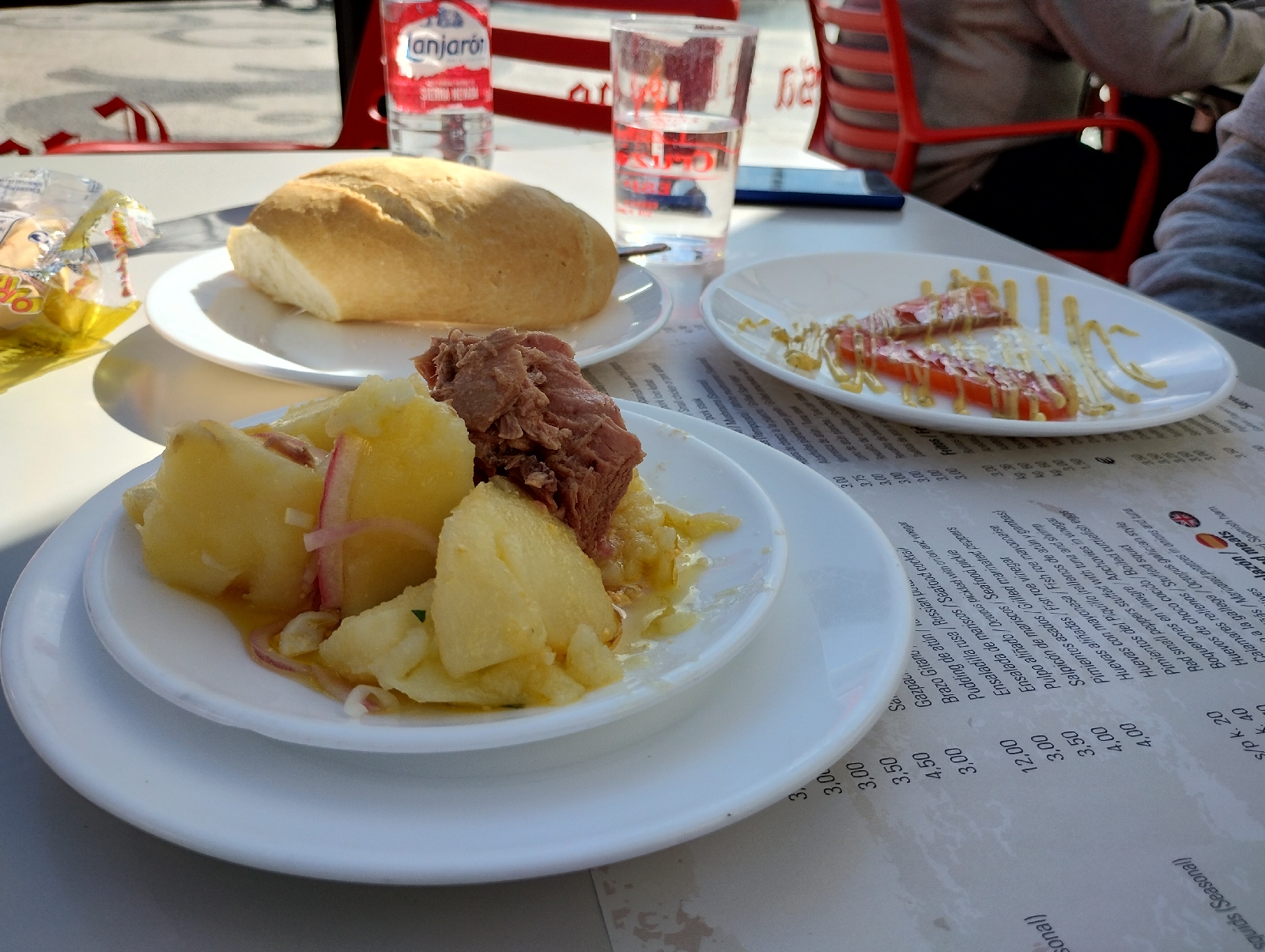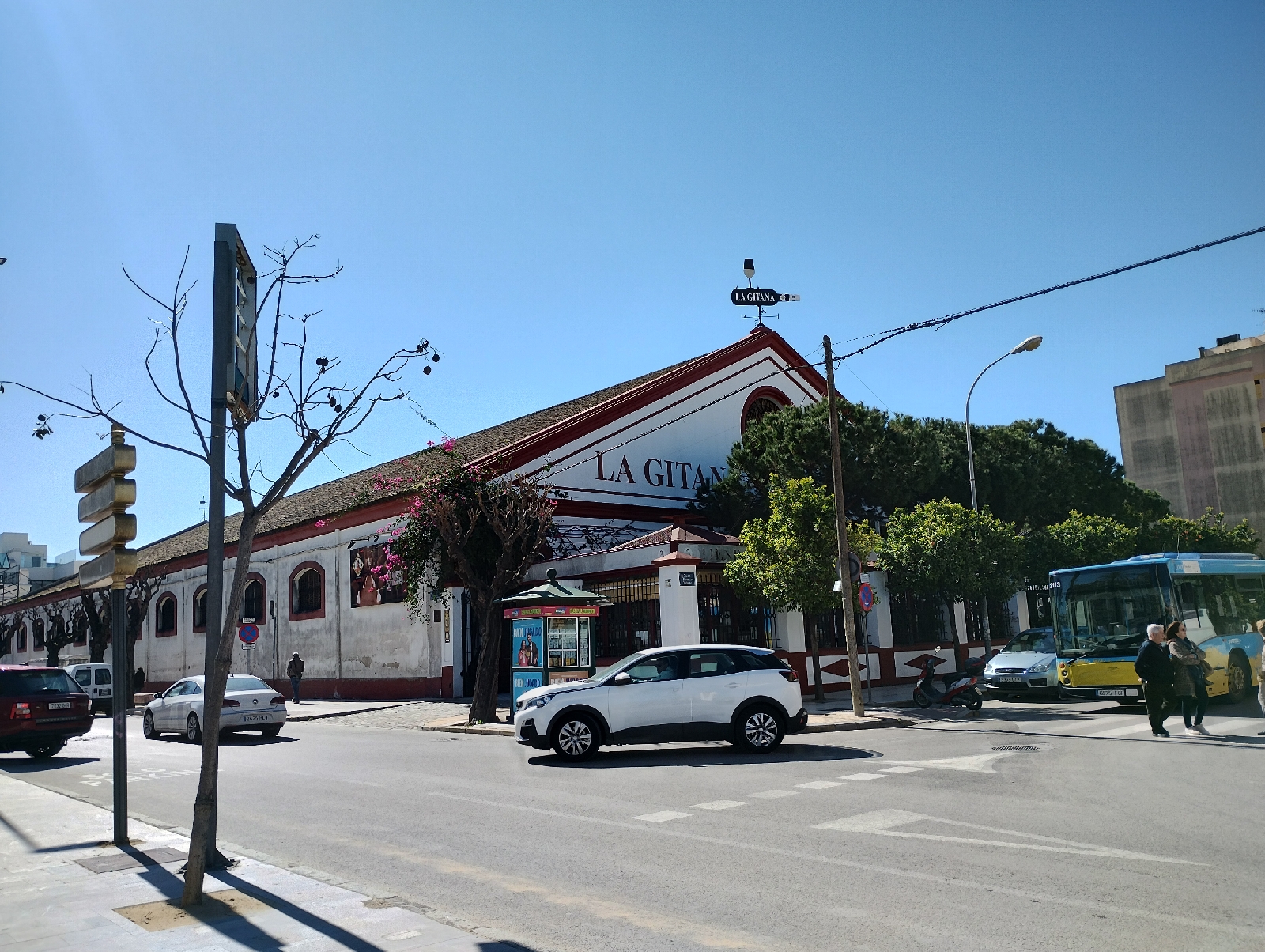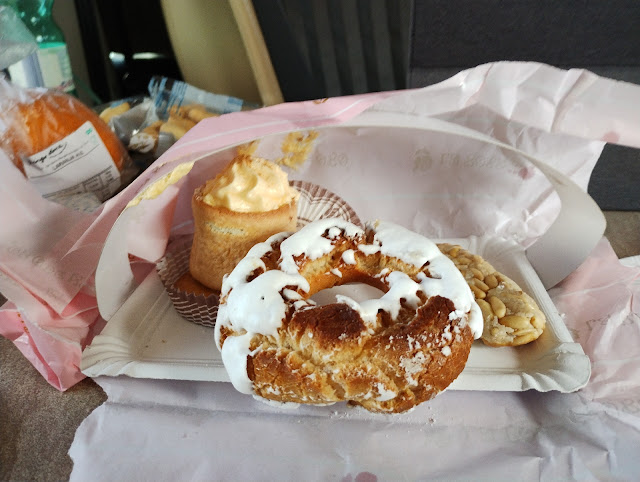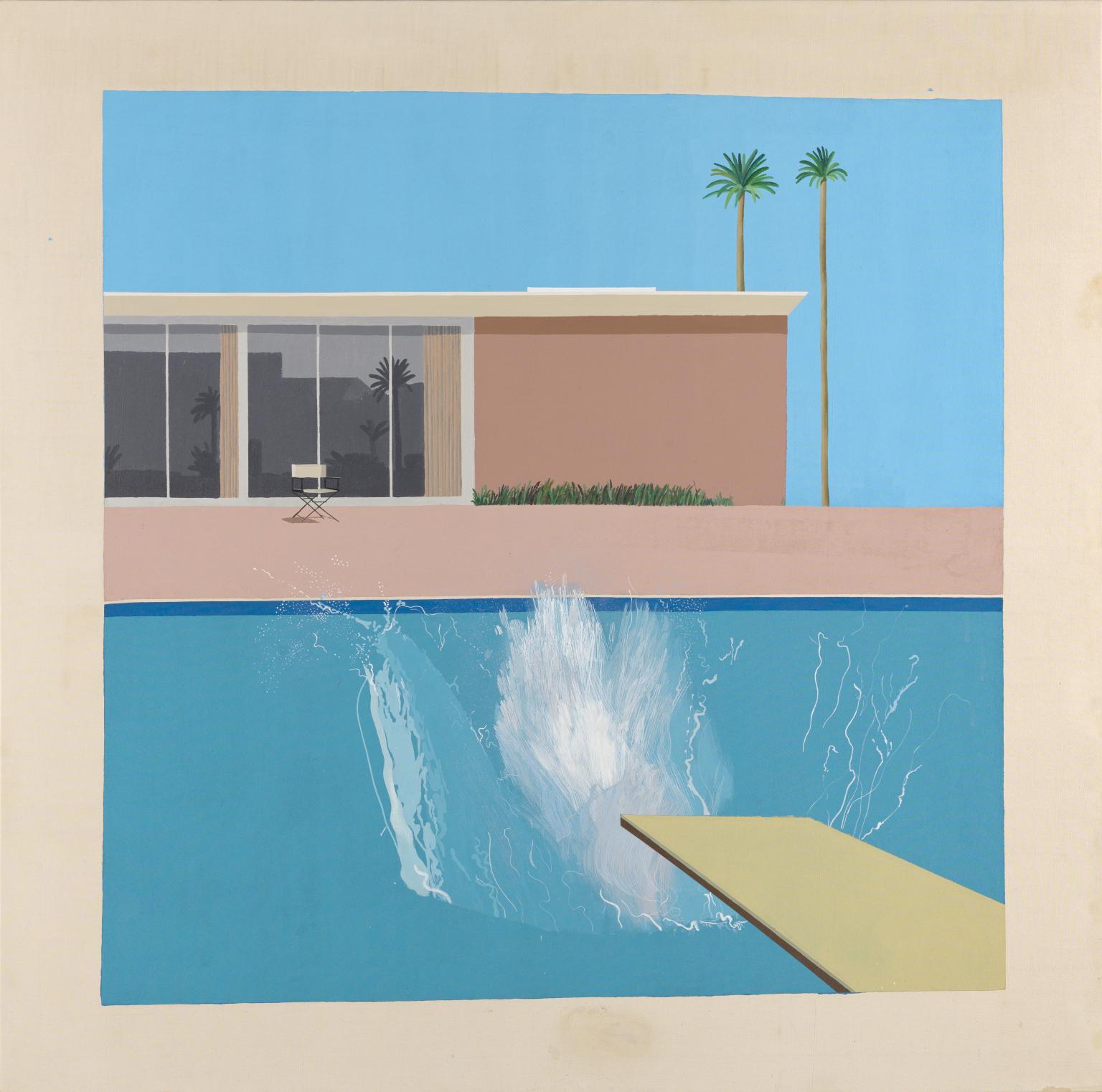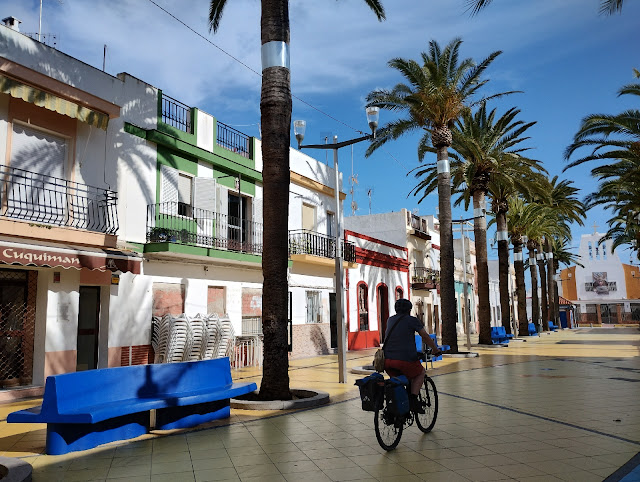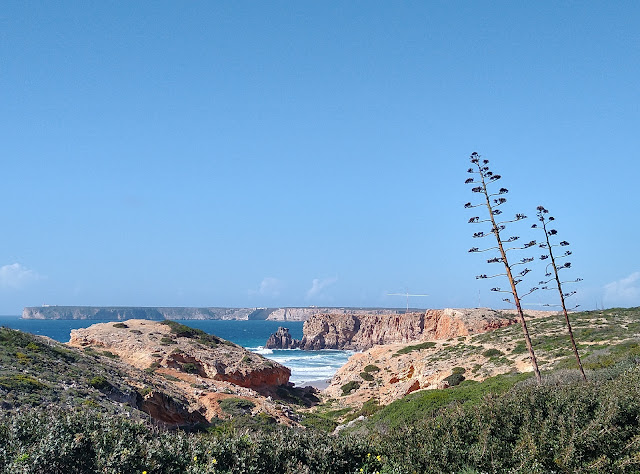The immediate surroundings are somewhat rough and ready too. A tangle of narrow potholed roads connecting slightly ramshackle huertas and small farm - it's not beautiful, but it's lived in, productive and you get the sense it has been like this for millennia - a comforting, humanised landscape.
Our plan was simple, stay here for two days, have lunch in Chipiona on the first day then so exactly the same thing in Sanlúcar the following one.
The weather complicated things. Overnight the wind strengthened, by morning it was a maddening 30kph blast enlivened by occasional gale force gusts. The van gently rocked about - after a while it can make you feel slightly unhinged. We decided to head to Chipiona anyway. It's a dedicated cycle track most of the way. The pedelec made short work of the headwind, but the blustery conditions made us wobble around so it was good the route was traffic free.
The last time we were here we noticed a popular bodega next to the remains of Chipiona's small seaside fortress. It looked like a good place for lunch - next time we promised ourselves - and here we are.
The place specialises in moscatel style sherry and has a good range of interesting tapas. Chipiona is not exactly unvisited, but it's not primarily a tourist town. The Bodega el Castellito was busy, mainly with locals, which is a good sign that you will get authentic, freshly produced tapas.
.Sadly I am on agua minerale con gas - minimise your alcohol intake advised the consultant urologist in January - I am following his advice, but somewhat grumpily.
The delights of wandering aimlessly round urban spaces was elevated to a minor art form by writers like Baudelaire and Walter Benjamin, and given a name - 'flaneurie'. Oddly, the pleasures of people watching while sitting still has not been graced by an exact term, at least not one that readily comes to mind. Anyway, I am a big fan of this undefined pleasure - perhaps it does need a specific word . How about 'splodging'? To splodge - to sit outside a cafe or bar in an urban setting while watching the world go by. So far as Plaza de San Roque is concerned we have a go-to splodging spot - Casa Balbino. - good tapas, local vibe, inexpensive. What more do you want?
If you need a table with a clear view of the square (splodge spot) then you must arrive a few minutes after midday. The place is very popular, by 12.15 all the best tables have been taken, fifteen minutes later a dozen people have formed a hopeful queue. The menu hasn't changed much over the years, nor have the prices. Casa Balbino' specializes in delicious but inexpensive small plates, no wonder it has always been busy whenever we have eaten here
This time we shared four small plates - Croquetas cameras, Tortilla de camarones, Papas aliñás and Lomo de salmón con nosteza de eneldo.
Gill had a glass of manzanilla, the dry sherry unique to Sanlúcar, sadly just sparkling water for me.
We cycled back via Bodegas Hidalgo - La Gitana to pick up a couple of bottles of sherry to take home. We chose 'La Gitana', the place's eponymous manzanilla and an oloroso - a little more expensive one than the brands found in local supermarkets, so hopefully something a bit special.
Our plan for the next few days is to wander slowly southwards towards Gibraltar, not because we are missing Morrisons or Marks and Sparks. Our plan is to better acquaint ourselves with our long lost cousins. We've watched a couple of programmes over the last year or so highlighting recent research in Gibraltar about the last known population of Neanderthals. We are going to visit the Gibraltar museum which showcases the archeological evidence.
Now though we are parked in an area autocaravanas next to Cabo Trafalgar. It was very lively when we arrived yesterday. The bars and restaurants were busy with families out celebrating Andalusia day. Today is very quiet - like Boxing Day, the effect of the collective hangover feels palpable. When we took a stroll down to the lighthouse there was only half a dozen people about.
The light was stunning, the broad beach curving to the north was almost empty, just sky, sea and low green hills stretching away. Huge white clouds hung above the beach, their shadows snaking across the sands like wispy smoke.








